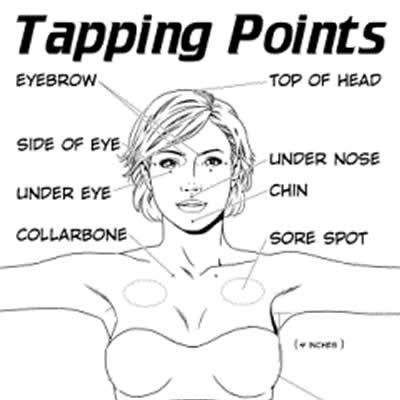Standing Meditation for Taiji
 Meditation is often one of the hardest parts of Taiji for beginning students to want to learn. It can be a difficult thing to just step out of our fast paced lives and all of a sudden go into a still and quiet place. We’re not used to it, so the lack of being involved in external stimulus can seem boring – at first. However this boredom doesn’t last for long.
Meditation is often one of the hardest parts of Taiji for beginning students to want to learn. It can be a difficult thing to just step out of our fast paced lives and all of a sudden go into a still and quiet place. We’re not used to it, so the lack of being involved in external stimulus can seem boring – at first. However this boredom doesn’t last for long.
Meditation is also one of the most important aspects of doing Taiji. Taiji has an attitude of uncovering the “stillness within motion”, and it is only through meditation that we can realize this. It grounds us, teaches us to center ourselves both emotionally and physically, shows us how to Be in the moment, and builds up tremendous leg strength from the inside out. It is through doing meditation that our Taiji movements will be filled with relaxation and that flowing, beautiful grace that it is known for.
What should one try to make happen in meditation? Absolutely nothing. The idea is to fully experience – in a very grounded way – whatever it is that happens. Sometimes this will be nothing more than a serene sense of peace and clarity. Other times experiences could include visual, auditory, or tactile sensations. And energy flow within ourselves can be a wonderful thing to allow and observe. There are also physical changes in health and emotional attitudes that will start to change and open. Each person will have their own, unique range of experiences so it is best not to expect anything specific, but remember to allow and observe what it is that does happen.
The beginning student should learn not to fear any sensations, thoughts, or feelings experienced in meditation. The idea is to be able to ground and center yourself, and from this position just allow and observe the experience. By doing this there is no limit to what we can learn about ourselves, why we think or act certain ways, the depth to which our bodymindspirit is connected, and our relationship to life.
Standing meditation is the most basic posture in Qi Gong, and Taiji is a form of Qi Gong. Simple standing is usually done first to ground and center ourselves, and begin to open and fill our energy centers. Standing is then followed by some warm-up Qi Gong exercises. These exercises build up our qi and harmonize the meridians. Finally we do moving Taiji to flow the abundance of qi throughout our bodies like the wind and water. The Taoist definition of health is “the smooth, harmonious, abundant, and appropriate flow of qi”.
Following are step-by-step instructions for Standing Meditation. Ideally this should be practiced 1 to 3 times daily. Start out by doing 5 minutes at a time, building up to 20 minutes, and not doing more than 45 minutes at one time. At any time that you notice your mind wandering, take it back to simply following your breath. You will soon find why it is that advanced students and The Masters do so much standing meditation.
Standing in the Wu Ji posture
1. Stand comfortably with your feet shoulder width apart.
2. Make sure your toes are pointed straight ahead.
3. There is a gentle, relaxed bend to the knees and they tend to push lightly outwards as opposed to collapsing inwards.
4. The pelvis is tucked slightly forward so the lower spine is straight.
5. The shoulders are loose and relaxed, not raised up, hands hang loosely at the sides.
6. The head is held up as if suspended by a string.
7. Breathing is done through the nose and is slow, soft, and deep.
8. Eyes are either closed, or are slightly parted but not focused on anything.
Beginning the meditation
-
Follow your breath with your mind, feeling where it goes inside of you.
-
Slowly scan your body from head to feet looking for any tension or discomfort. If any is found, use the mind to gently guide the breath there and as you exhale, imagine the tension flowing down and releasing into the Earth, dispersing.
Focusing to activate specific energy centers
-
Become aware of your feet and their connection to the Earth. Imagine that you are inhaling strong, clean energy from the Earth into the Bubbling Well points of your feet, and exhaling used, turbid energy back into the Earth. Do this for 8 to 36 breaths.
-
Next let the energy from the Earth travel up the legs and into the lower dan tien located beneath the navel. This is our center of inner strength and power. Imagine that you are inhaling pure, healing energy into your dan tien, letting it fill your entire lower abdomen. Exhale, purging any unclean energy from this center. Do this for 8 to 36 breaths.
-
Change the focus of your mind to the heart center located in the middle of the chest. This is our center of love and compassion. Imagine that you are inhaling purified energy into the heart center. Exhale, cleansing the heart and surrounding yourself with the feeling of compassion. Do this for 8 to 36 breaths.
-
Change the focus of your mind to the 3rd eye center located between the eyebrows in the middle of the forehead. This is our center of higher consciousness. Imagine that you are inhaling clear and focused energy into the 3rd eye center. Exhale, cleansing the mind and connecting with the consciousness of the Universe. Do this for 8 to 36 breaths.
-
Now bring the focus of your mind back to the lower dan tien, below the navel. Imagine a warm flow of energy filling this center. As you both inhale and exhale, imagine a channel of energy extending upwards from the dan tien to the heart center, and continuing up to the 3rd eye center. This connects our body, spirit, and mind. Maintain this connection for 8 to 36 breaths.
-
Change the focus of your mind to the palms of your hands. Imagine breathing into the Lao Gong point at the center of your palms and also exhaling from this point. Feel your hands filling and becoming surrounded in warm qi. Do this for 8 to 36 breaths.
-
Finally, simply stand and follow your breath. Allow yourself to feel the energy flowing in and around your body. Do this until you feel finished.
Variations
-
Seated
-
Embracing the one: arms are circled with shoulders relaxed
-
Horse stance: feet are beyond shoulder width apart
-
Embracing the one in horse stance
(Standing Meditation for Taiji was originally printed in TouchofTao.com)



